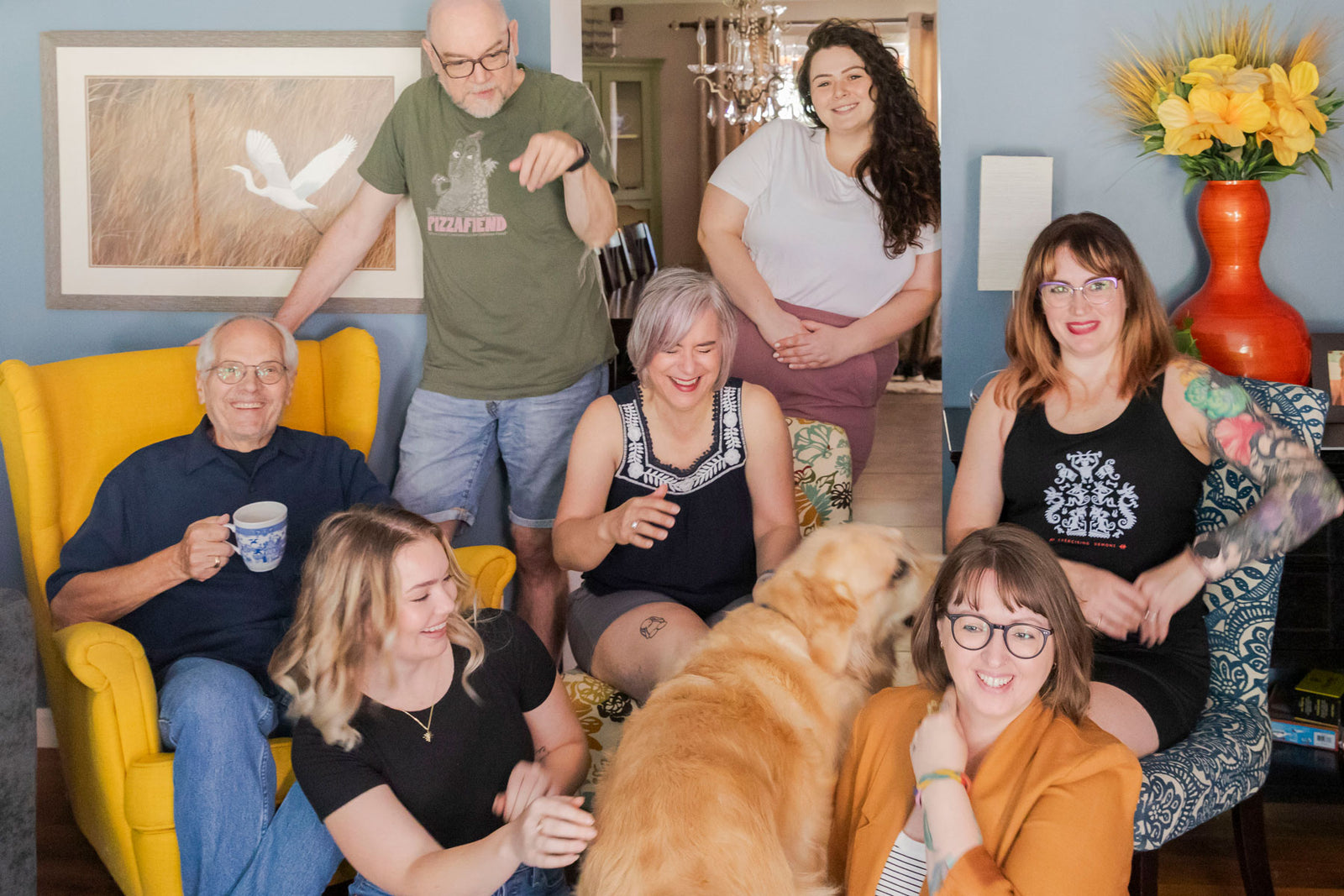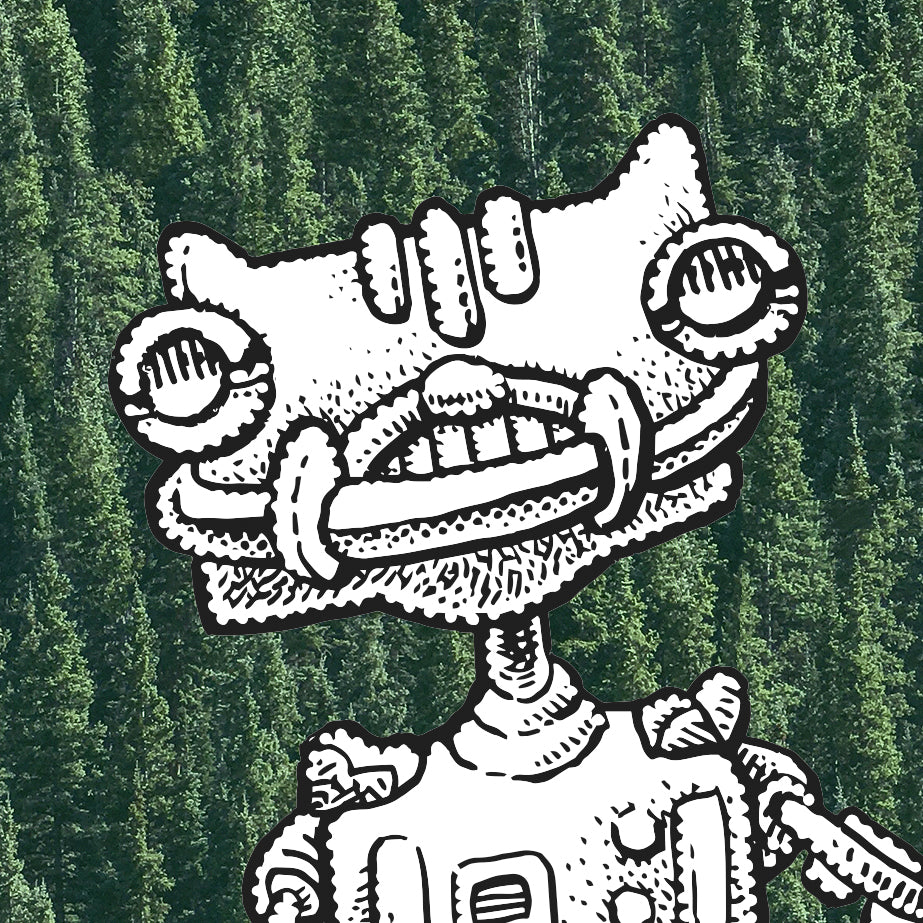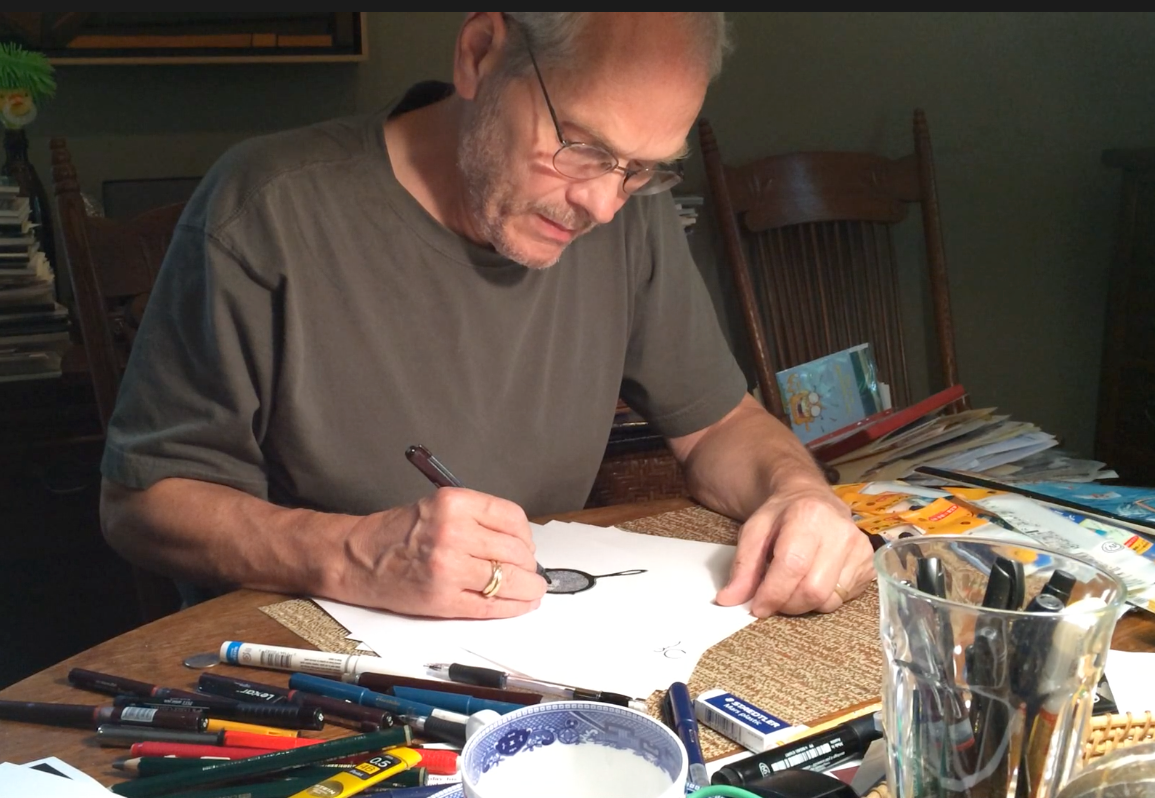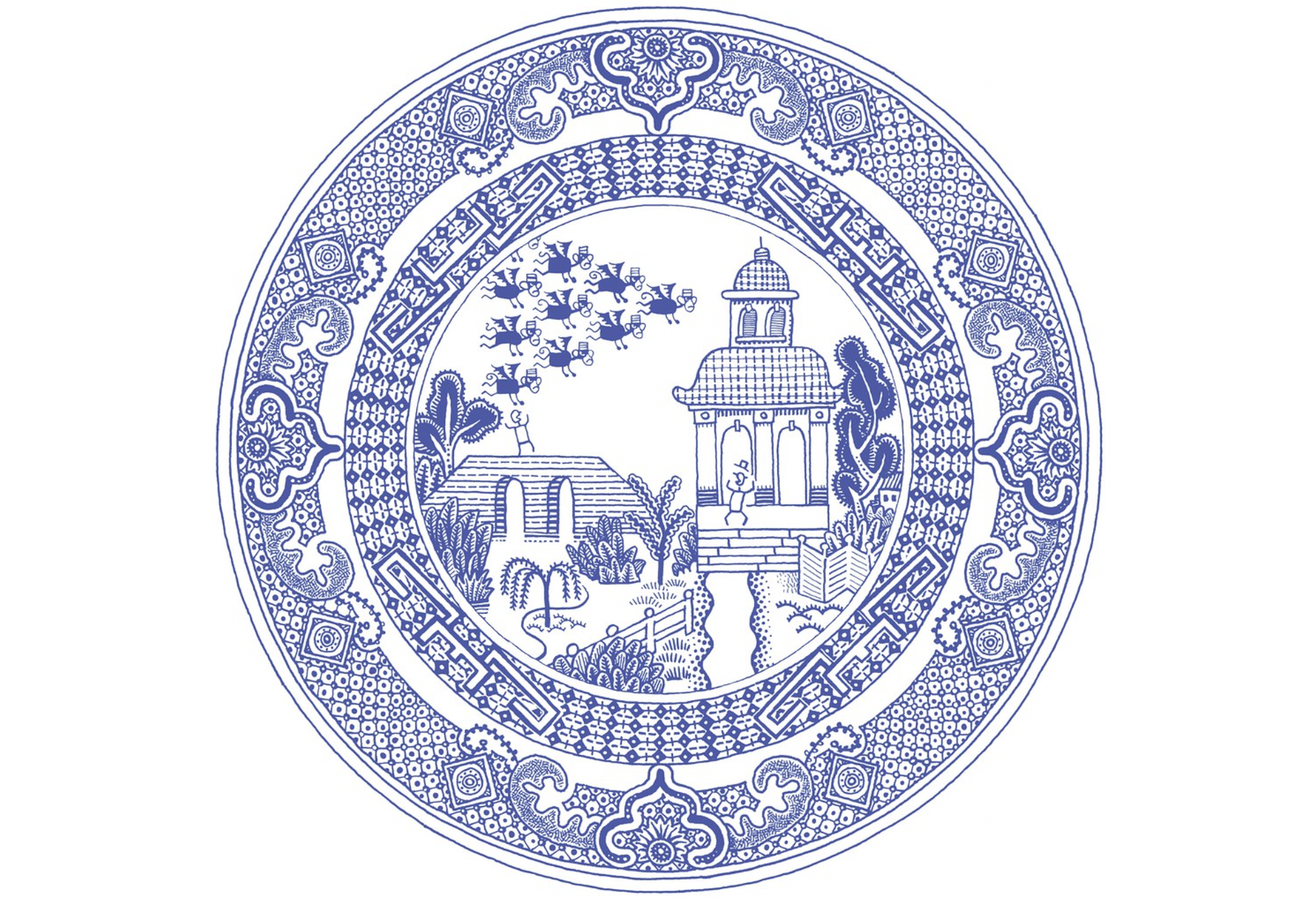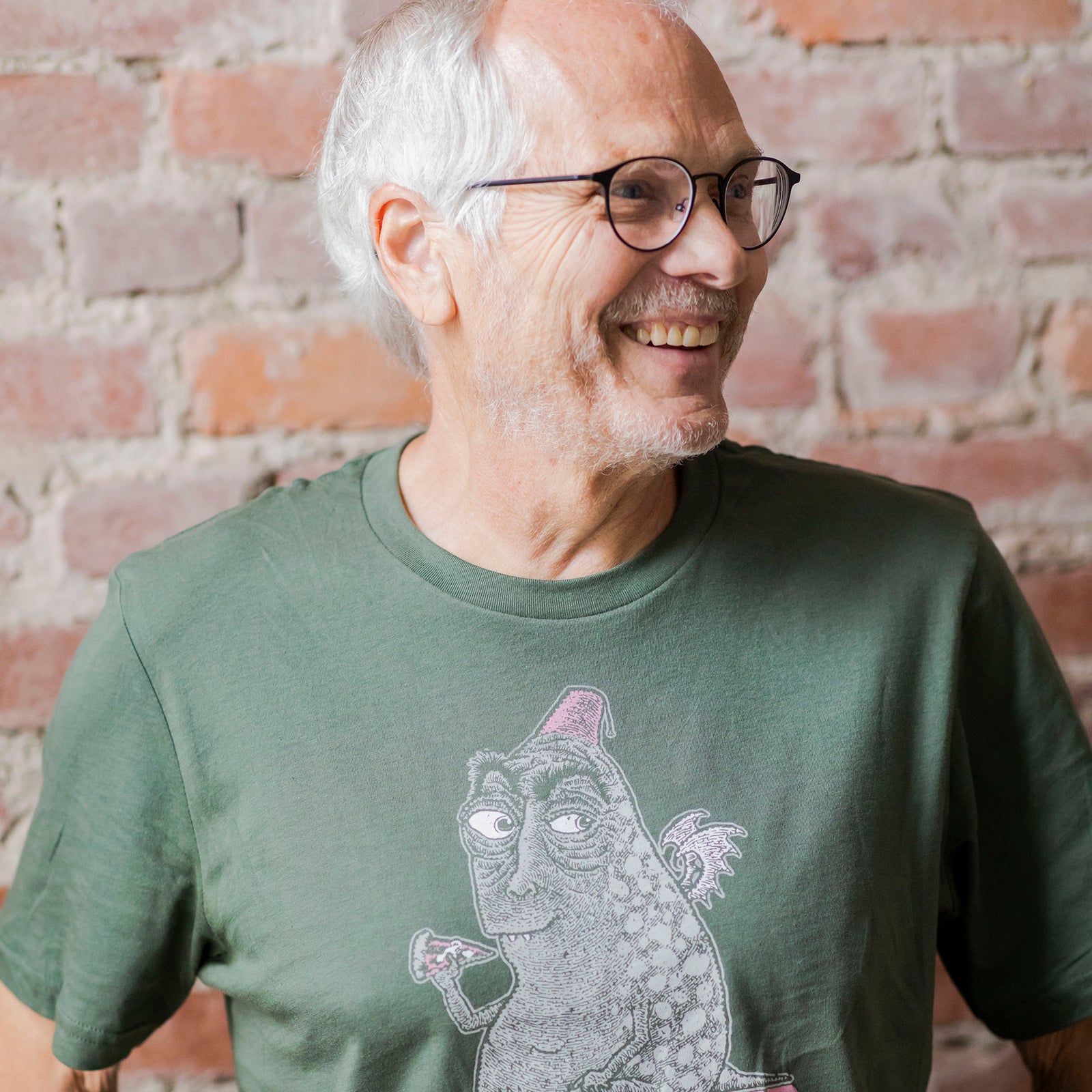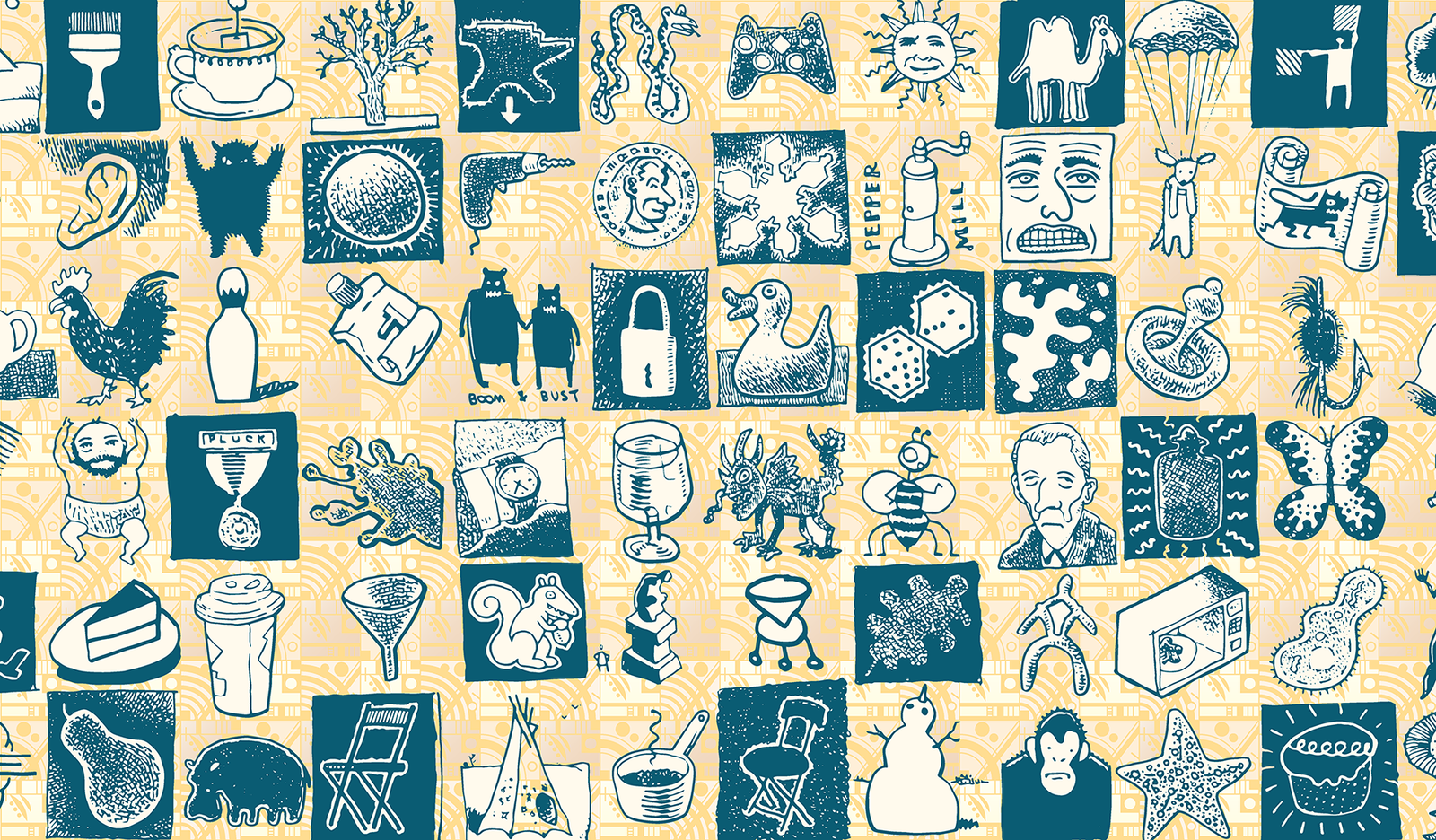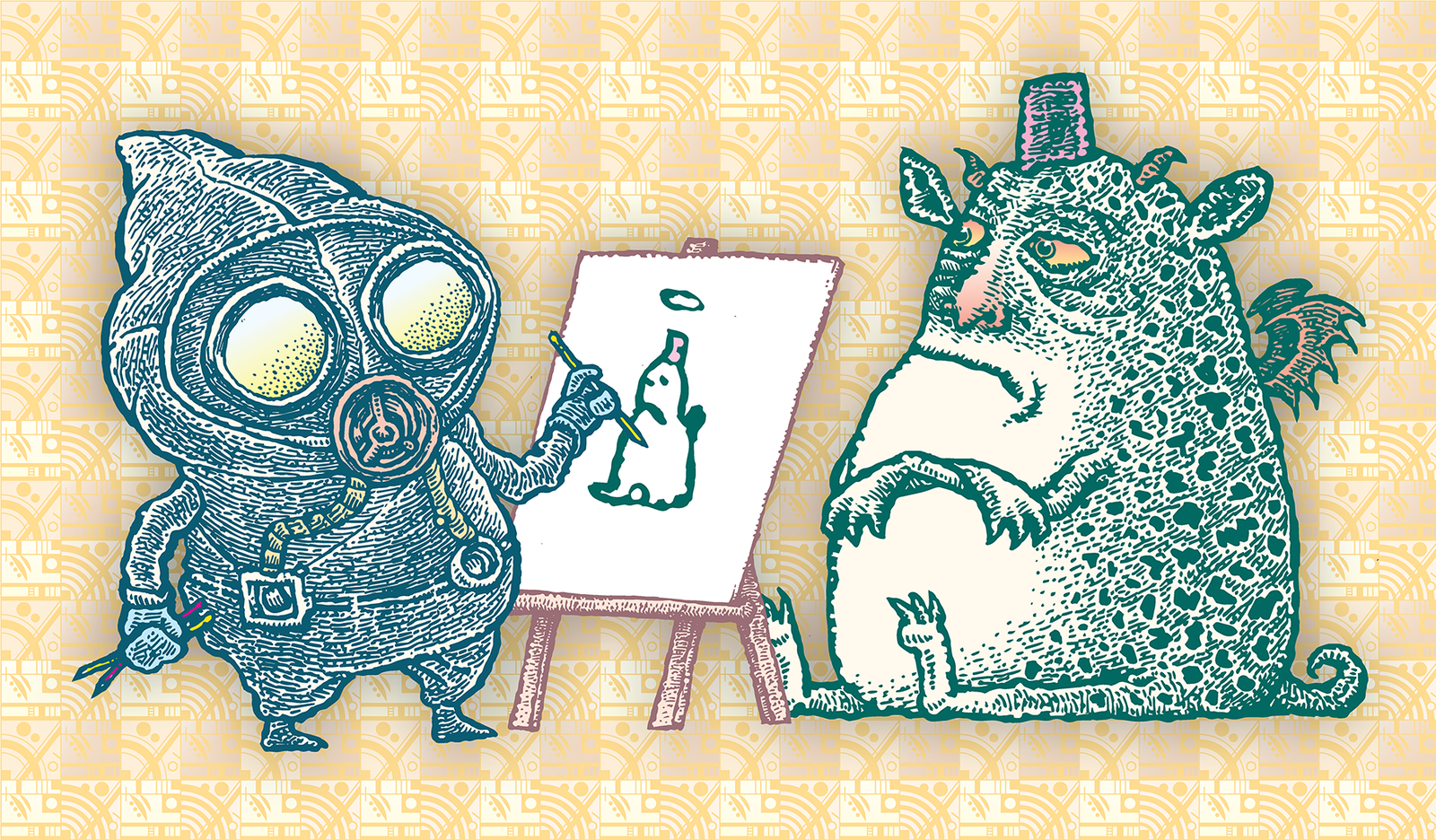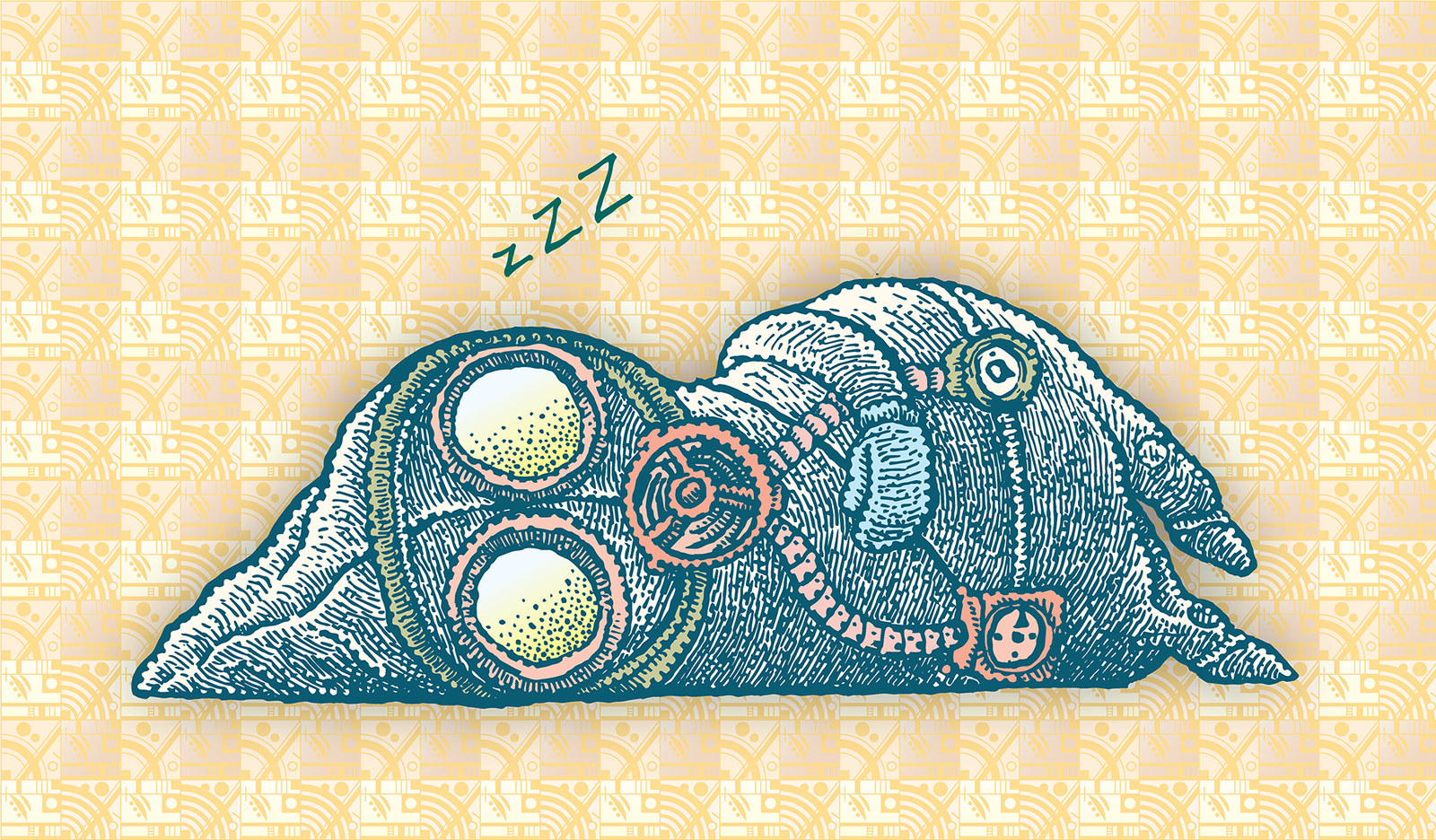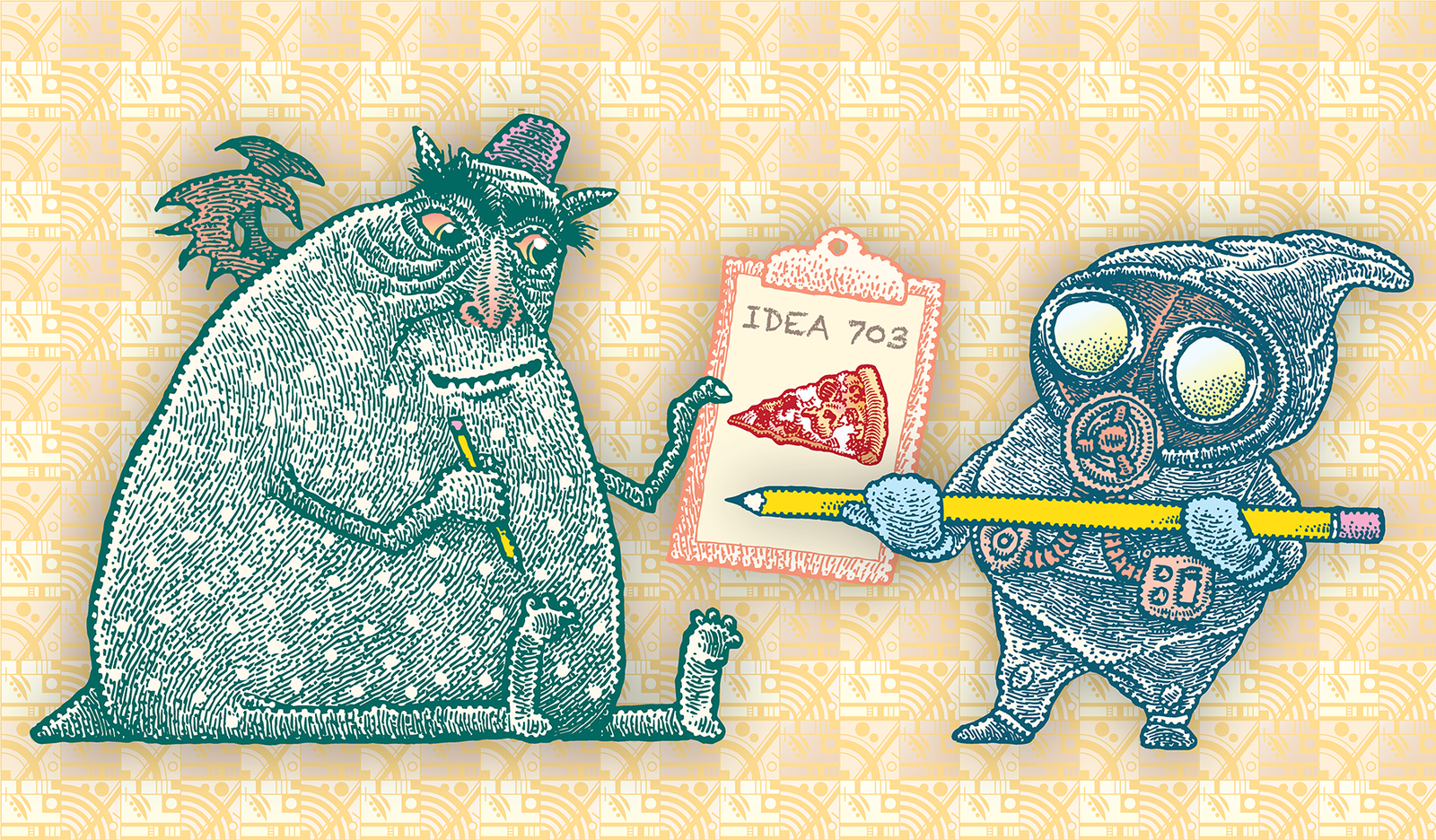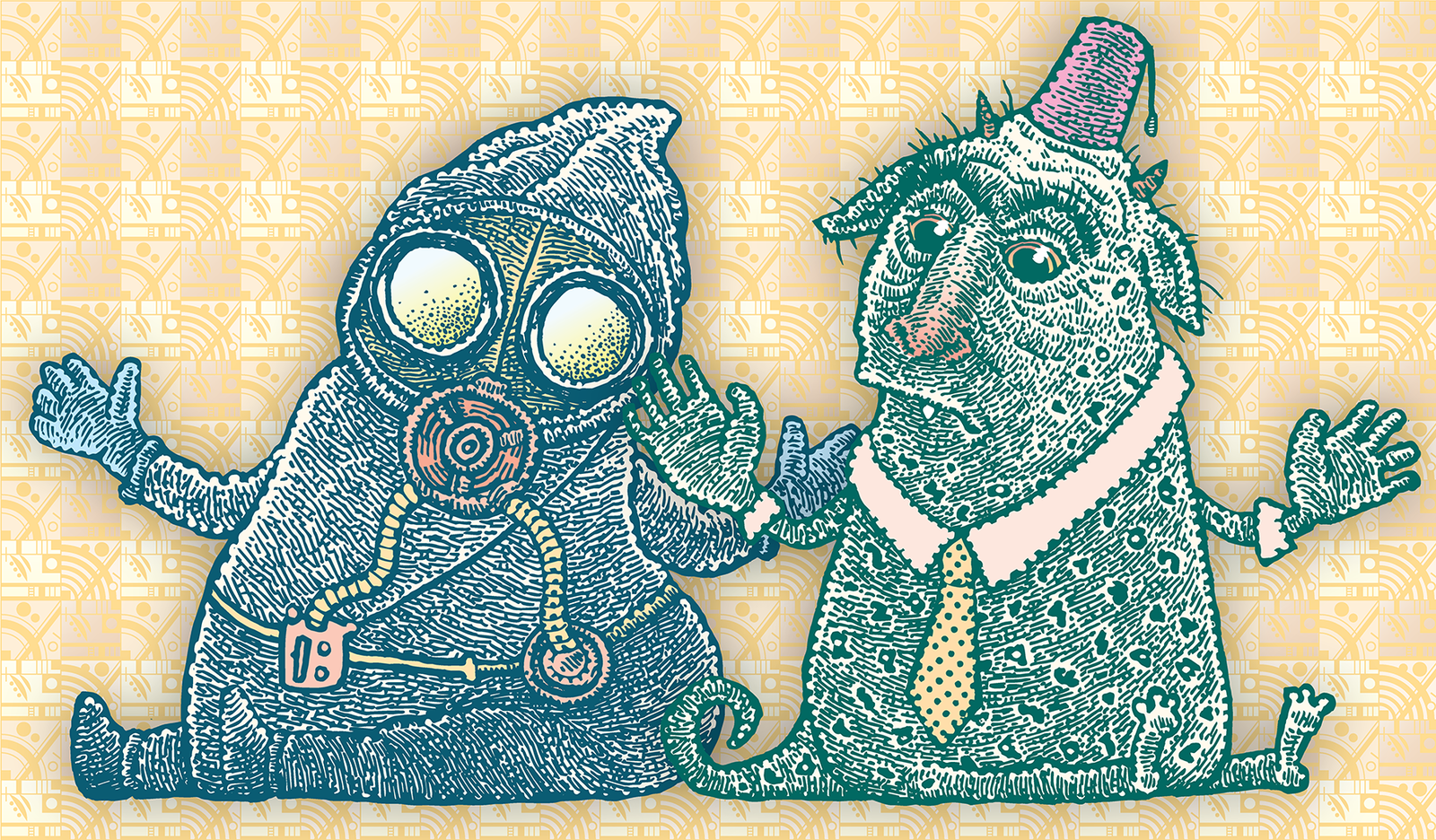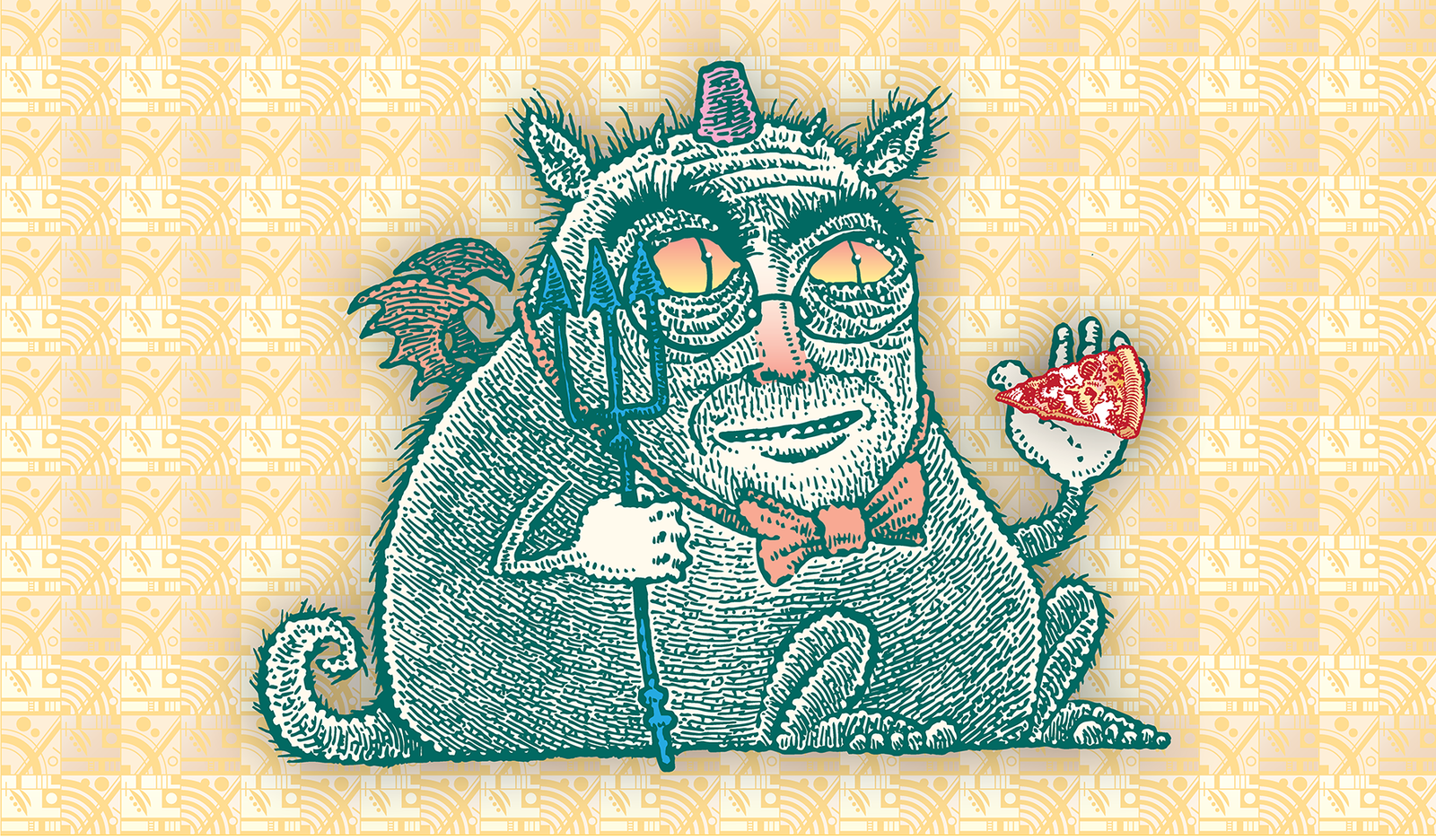Calamityware is a small, eight-person company headquartered in Pittsburgh. Our boardroom is a living room, which we share with a dog and a cat.
We believe in three things—having fun, taking naps, and making you happy. We’re sure we’re doing okay on the first two, and, based on the extravagantly ebullient missives we’ve received, we seem to be doing okay on the third as well.
Calamityware is a small, eight-person company headquartered in Pittsburgh. Our boardroom is a living room, which we share with a dog and a cat.
We believe in three things—having fun, taking naps, and making you happy. We’re sure we’re doing okay on the first two, and, based on the extravagantly ebullient missives we’ve received, we seem to be doing okay on the third as well.
Don
is supposed to design new products and write and illustrate blogs. Without the help he gets from the team, there would be no Calamityware…zip. He would have given up the whole effort long ago. You'll find a mini-biography of Don here.
Lynnette
takes care of accounting, taxes, insurance, inventory, importing, vendor management, and a vast amount of tedious paperwork. Lynnette also attends to some customer service issues. Basically, she's the boss.
Jack
makes sure the online store works so orders go out fast. Jack’s a writer and designer who makes charming marketing materials, emails, packages, inserts, and videos. He also helps Nina and Brandy with customer service issues. So busy!
Brandy
heads up product development, and makes sure that the process runs smoothly from the time Don sketches a new design, through that product hitting our website. She also may respond to a customer service issue or two when she has time.
Nina
brings a special flair to handling customer service conundrums, which includes figuring out how to accommodate the odd requests we get and how to solve the peculiar problems that materialize.
April
is a hard worker, meticulous, neat, organized, and a great quality control checker for the products she prepares for selling. April is also very camera shy and prefers anonymity.
Missing Link of Mystery
Sam
and Vanessa ensure that the public are informed about Calamityware, our products, and any other nonsense we are getting up to. They help decide what pictures and videos you see, what emails are sent, what promotions to run, and anything else related to marketing.
Vanessa
and Sam ensure that the public are informed about Calamityware, our products, and any other nonsense we are getting up to. They help decide what pictures and videos you see, what emails are sent, what promotions to run, and anything else related to marketing.
Jonathan
is our friend, whom we've worked with for years. With a diverse background in branding, graphic design, marketing strategy, photography, and web development, he brings a real jack-of-all-trades approach to all of Calamityware's content.
The idea for Calamityware grew out of a slightly fanatical habit of Don Moyer, who draws strange and otherworldly creatures doing everyday activities, and posts the sketches on Flickr.
After 30 years running his own successful communication and design consultancy, he jumped off the 9-to-5 train, took a long nap, and started Calamityware.
The idea for Calamityware grew out of a slightly fanatical habit of Don Moyer, who draws strange and otherworldly creatures doing everyday activities, and posts the sketches on Flickr.
After 30 years running his own successful communication and design consultancy, he jumped off the 9-to-5 train, took a long nap, and started Calamityware.
Calamityware’s first product was a Blue Willow porcelain plate festooned with a beautiful Asian pagoda and grouchy flying monkeys. We launched it on Kickstarter in 2013, and $19,270 later, the first batch of Don’s creatures began to march into existence, with more of Don’s monsters, robots, and aliens snapping at our heels.
Calamityware’s first product was a Blue Willow porcelain plate festooned with a beautiful Asian pagoda and grouchy flying monkeys. We launched it on Kickstarter in 2013, and $19,270 later, the first batch of Don’s creatures began to march into existence, with more of Don’s monsters, robots, and aliens snapping at our heels.
I’m the founder of Calamityware, and my drawings are the basis for all of Calamityware’s products. Here’s the main thing I can tell you about the creative process: It is a model of inefficiency.
Let me explain what happens. I draw in my sketchbook every day. I have for years. The purpose of these drawings is to amuse myself. I draw things I see around me. I draw patterns. I draw creatures, monsters, and aliens. I draw exotic vehicles, letterforms, human faces, and anything else that captures my fancy.
I’m the founder of Calamityware, and my drawings are the basis for all of Calamityware’s products. Here’s the main thing I can tell you about the creative process: It is a model of inefficiency.
Let me explain what happens. I draw in my sketchbook every day. I have for years. The purpose of these drawings is to amuse myself. I draw things I see around me. I draw patterns. I draw creatures, monsters, and aliens. I draw exotic vehicles, letterforms, human faces, and anything else that captures my fancy.
My daily drawings are pure fun. As a basis for new products, though, they are usually wretched. But on rare occasions a sketch will exhibit a faint glimmer of promise. Then the serious work begins.
My daily drawings are pure fun. As a basis for new products, though, they are usually wretched. But on rare occasions a sketch will exhibit a faint glimmer of promise. Then the serious work begins.
When I’m developing a product idea, I do dozens of sketches, variations, and refinements to resolve all the details. Adjustments to an alien’s antennas, the spaces between letters, and the density of a shadow can take weeks. Often, in the end the alien is eliminated, the specific letters are changed, and the shadow is superfluous. The effort of chasing perfection can sometimes be fun, but it’s rarely relaxing. Fortunately, if the fun evaporates, I just drop the whole project and work on something else.
When I’m developing a product idea, I do dozens of sketches, variations, and refinements to resolve all the details. Adjustments to an alien’s antennas, the spaces between letters, and the density of a shadow can take weeks. Often, in the end the alien is eliminated, the specific letters are changed, and the shadow is superfluous. The effort of chasing perfection can sometimes be fun, but it’s rarely relaxing. Fortunately, if the fun evaporates, I just drop the whole project and work on something else.
As soon as possible in the process, I try to transition from flat sketches to physical models. That means if I’m doing a mug, I wrap the design around a cylinder of the right size. If I’m creating a bandana, I try printing the image on fabric at the true size. If I’m making a jigsaw puzzle, I print a sample of the design in color at the final size and cut tiny masks to preview how much detail will appear on a typical puzzle piece.
As soon as possible in the process, I try to transition from flat sketches to physical models. That means if I’m doing a mug, I wrap the design around a cylinder of the right size. If I’m creating a bandana, I try printing the image on fabric at the true size. If I’m making a jigsaw puzzle, I print a sample of the design in color at the final size and cut tiny masks to preview how much detail will appear on a typical puzzle piece.
As the design develops, I share each iteration with the team to get their feedback. This results in more rounds of adjustments.
Sometimes they convince me that an idea I love is wrong. Then I set it aside for a while and share it with them a few months later, hoping that they will like it the second time around.
So far, this ploy hasn’t worked. They always seem to remember what they didn’t like.
As the design develops, I share each iteration with the team to get their feedback. This results in more rounds of adjustments.
Sometimes they convince me that an idea I love is wrong. Then I set it aside for a while and share it with them a few months later, hoping that they will like it the second time around.
So far, this ploy hasn’t worked. They always seem to remember what they didn’t like.
If we haven’t already figured out who can produce the product, we start looking for a qualified workshop. We need someone who has mastered quality and won’t be a torture to work with. When we identify a good partner, I complete a master artwork file, and the workshop makes a prototype.
Sometimes the first prototype is perfect. But often there are subtle problems with materials, colors, scale, and details. This results in a series of exchanges to get the workshop to make fixes.
If we haven’t already figured out who can produce the product, we start looking for a qualified workshop. We need someone who has mastered quality and won’t be a torture to work with. When we identify a good partner, I complete a master artwork file, and the workshop makes a prototype.
Sometimes the first prototype is perfect. But often there are subtle problems with materials, colors, scale, and details. This results in a series of exchanges to get the workshop to make fixes.
The process can take months, but eventually we get to a great prototype. We sign off on that and load the project onto Kickstarter.
Kickstarter is a crowd-funding platform that eliminates risk. By describing a new project and inviting supporters to pledge, we can make sure there is sufficient interest to justify a production run. If not enough people want to support the project, no pledges are collected and we have no obligation to produce anything.
The process can take months, but eventually we get to a great prototype. We sign off on that and load the project onto Kickstarter.
Kickstarter is a crowd-funding platform that eliminates risk. By describing a new project and inviting supporters to pledge, we can make sure there is sufficient interest to justify a production run. If not enough people want to support the project, no pledges are collected and we have no obligation to produce anything.
If you want to go deeper, the Calamityware blog has some posts in which I talk about how I created some specific products.
Here are the links:
Ocean Commotion Jigsaw Puzzle
Stay Home: The Ugly Truth About Space Travel
Vigilant-Dragons Cookie Jar
Monster Etiquette
If you want to go deeper, the Calamityware blog has some posts in which I talk about how I created some specific products.
Here are the links:
Ocean Commotion Jigsaw Puzzle
Stay Home: The Ugly Truth About Space Travel
Vigilant-Dragons Cookie Jar
Monster Etiquette
